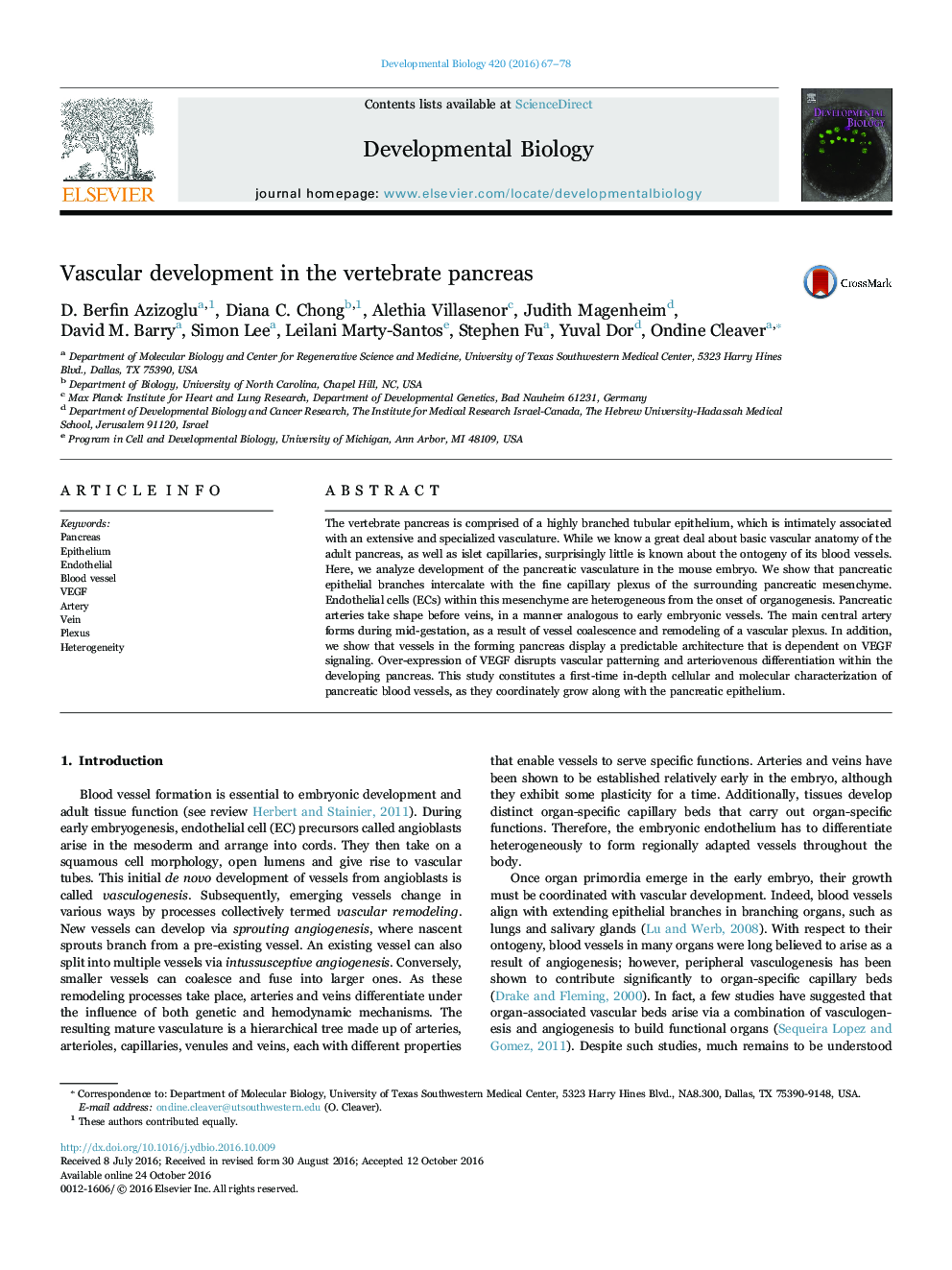| کد مقاله | کد نشریه | سال انتشار | مقاله انگلیسی | نسخه تمام متن |
|---|---|---|---|---|
| 5532039 | 1401827 | 2016 | 12 صفحه PDF | دانلود رایگان |
- Initial pancreatic bud epithelium is stratified and avascular.
- Branching of the epithelium into surrounding mesenchyme vascularizes the pancreas.
- Main pancreatic artery arises as a result of vessel remodeling and coalescence.
- Pancreas establishes arteries before veins, as it forms heterogeneous vascular beds.
- Arteriovenous patterning depends on regulated VEGF expression.
The vertebrate pancreas is comprised of a highly branched tubular epithelium, which is intimately associated with an extensive and specialized vasculature. While we know a great deal about basic vascular anatomy of the adult pancreas, as well as islet capillaries, surprisingly little is known about the ontogeny of its blood vessels. Here, we analyze development of the pancreatic vasculature in the mouse embryo. We show that pancreatic epithelial branches intercalate with the fine capillary plexus of the surrounding pancreatic mesenchyme. Endothelial cells (ECs) within this mesenchyme are heterogeneous from the onset of organogenesis. Pancreatic arteries take shape before veins, in a manner analogous to early embryonic vessels. The main central artery forms during mid-gestation, as a result of vessel coalescence and remodeling of a vascular plexus. In addition, we show that vessels in the forming pancreas display a predictable architecture that is dependent on VEGF signaling. Over-expression of VEGF disrupts vascular patterning and arteriovenous differentiation within the developing pancreas. This study constitutes a first-time in-depth cellular and molecular characterization of pancreatic blood vessels, as they coordinately grow along with the pancreatic epithelium.
238
Journal: Developmental Biology - Volume 420, Issue 1, 1 December 2016, Pages 67-78
